Frozen lemon yoghurt ice cream
What’s the result if you combine orange and lemon? And then add some yoghurt? And finally decide to freeze it all? “- A perfect summer dream”, according to a friend of mine who recently tried this (low-calorie) frozen creation. Let’s find out more!
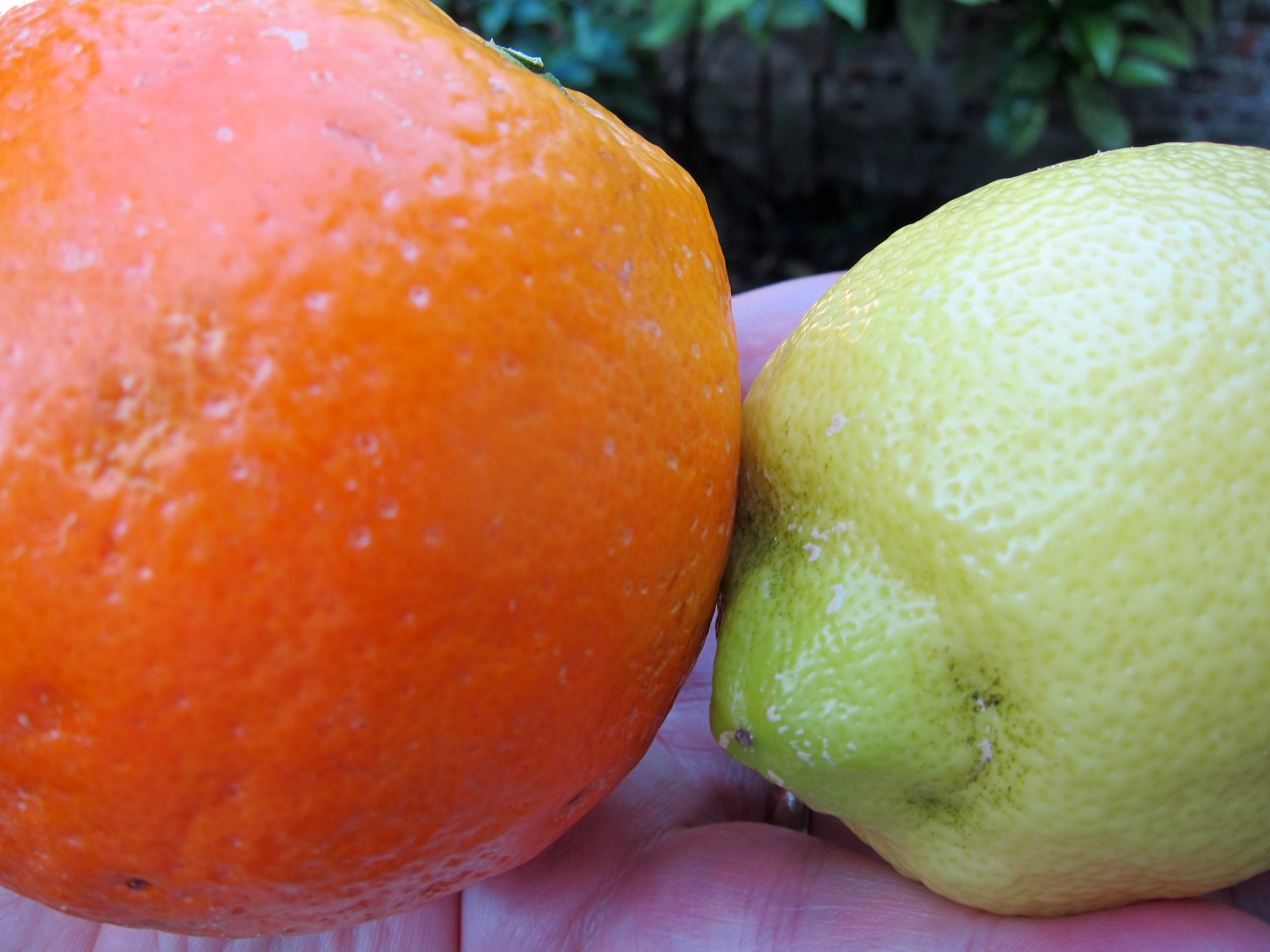
Related but still so different in flavour: Both the sweet orange and the sour lemon are members of the wider Citrus-fruit family.
I really have a soft spot for frozen yoghurt. Could it be that they often feel healthier and less fatty than many typical, creamy ice creams? Or is it the pleasant tangy touch which they add to the other flavours involved?
Flipping through a Swedish cookbook over at some good friends’ about a year ago (“Vårt svenska matarv. En kärleksförklaring” [Our Swedish culinary heritage. A declaration of love], now out of print and difficult to obtain), I found an interesting recipe for lemon yoghurt ice cream. It looked deceptively simple and was built in a way that reminded me of sorbets (= combining the yoghurt with a simple sugar syrup). Would that really work out? I had my doubts. But since the man behind the recipe was the well-renowned, internationally merited Swedish chef Robert Nilsson, I decided to go ahead and give it a try – not least because I was curious to find out whether combining lemon and orange actually would lead to something interesting. And it certainly did!
On Frozen yoghurts in general
Getting the consistency of frozen yoghurts right can be a bit of a problem. Have you ever tried to simply freeze some yoghurt (or milk, for that matter) in the freezer? Then you know that the result tends to be an unappetizing, icy chunk of hard-frozen dairy. We certainly want to avoid that!
Personally, I like to use ‘ordinary’ plain yoghurt and have had the best consistency-results when mixing such yoghurt with some cream (such as in my favourite Raspberry yoghurt ice cream). Others tend to stick with the more dense (and usually fatter) Greek-style yoghurt. Straining ‘normal’ yoghurt is another way of making the yoghurt denser by removing some of its water. Commercial frozen yoghurts, on the other hand, often come so loaded with industrial-style stabilisers, emulsifiers and flavours that it might be debatable how much really remains of the “yoghurt”. In fact, many persons used only to commercial frozen yoghurts might even be put off by the actual yoghurt-flavour that characterises the more ‘natural’ products.
Which leads us to another question: Is frozen yoghurt really healthier than ordinary ice cream?
Frozen yoghurts typically contains much less fat than ordinary cream-based ice creams. But since cream [or rather, the fat in cream] helps to build consistency and body in ice creams, frozen yoghurts often need other ingredients to keep them ice cream-like. As noted, commercial frozen yoghurts often accomplish this by adding a cocktail of ‘industrial’ stabilisers and emulsifiers. Another way of ensuring a scoopable consistency (leaving aside the direct addition of gelatine or cream into the yoghurt) is to add a lot of sugar (both of the normal and the inverted type).
So, in short: while frozen yoghurt may be healthier, it all depends on the other ingredients. The calorie-conscious should at least check whether a lower level of fat possibly is balanced with a hefty increase in sugar(s). Today’s recipe, in my mind, strikes an acceptable balance – there is very little fat and the – somewhat elevated – amount of sugar is not over the top.
So much for general observations. Now, let’s move on to the recipe!
Preparing the yoghurt base
The preparations are all very straightforward and simple.
Begin by preparing a simple sugar syrup, combining water, sugar and the inverted sugar. If necessary (= in case you prefer to heat the water when dissolving the sugar), let the sugar syrup cool down. Grate the zests and collect the fruit juices of the orange and of the lemon. Add these into the sugar syrup.
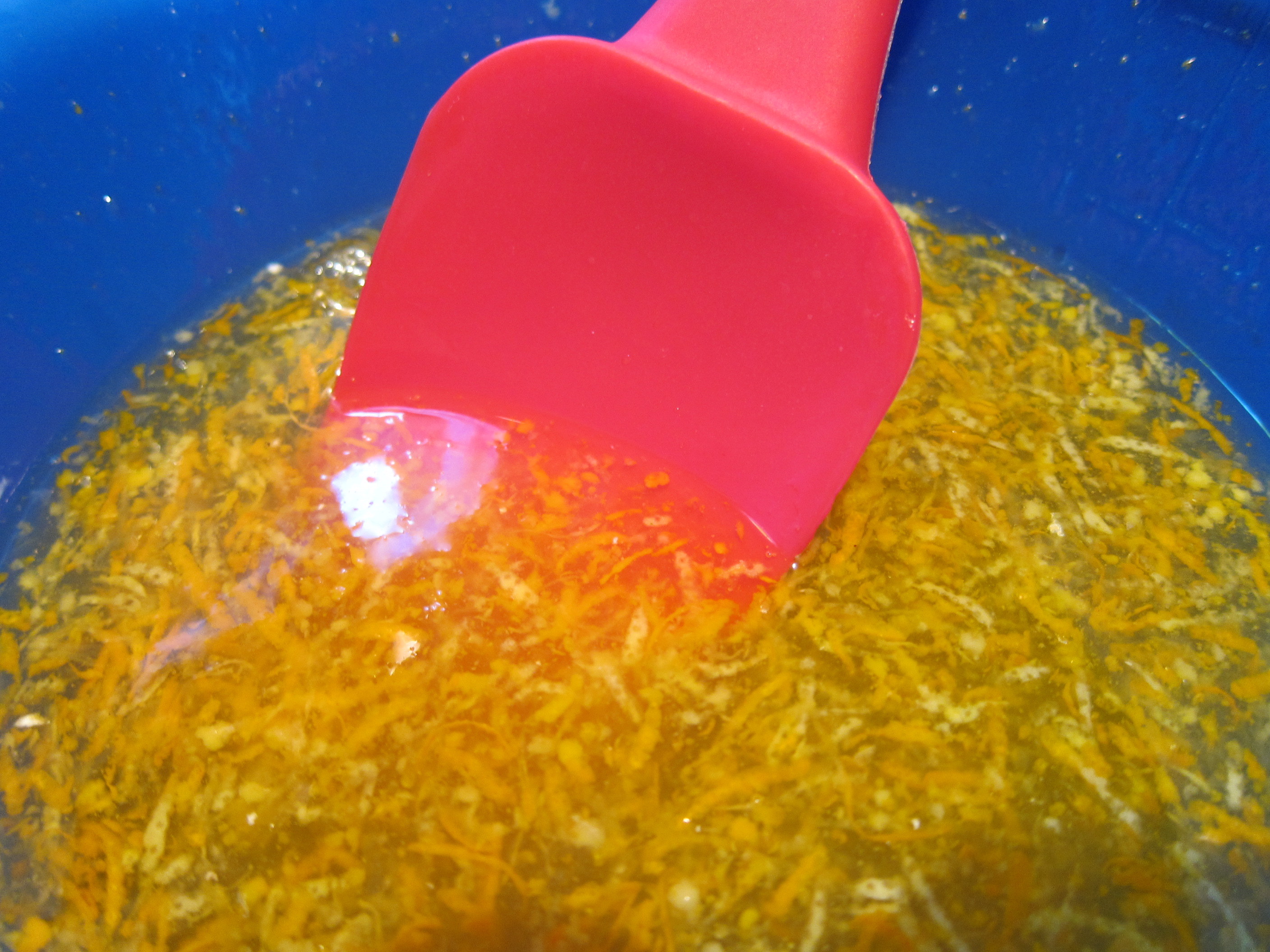
The grated peel does not only add to the flavour. It also contributes nicely as a visually stylish add-in.
Now, blend the (cold) sugar syrup with the yoghurt.
The base is now ready to be churned in your ice cream machine. No ice cream machine? Then still-freeze the base in your freezer according to the advise found in this helpful post.
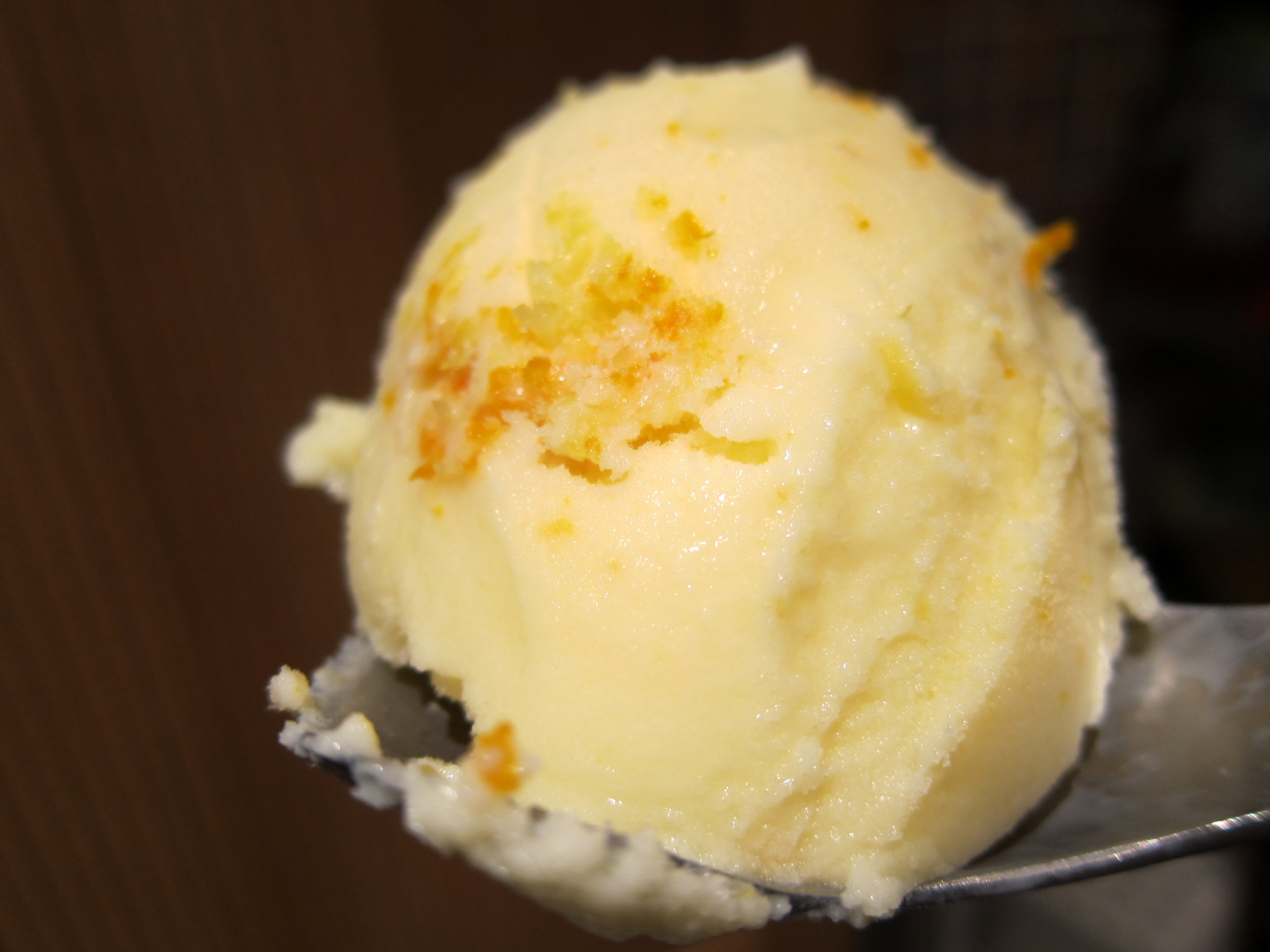
Frozen lemon yoghurt – light, fresh and delicious. Just beware the potential brain-freeze 😉
This recipe is a great example of what some sugar can accomplish for the structure and consistency of frozen desserts. Despite the high proportion of ‘standard’ yoghurt and low-fat character, the body of the frozen yoghurt remained scoopable, smooth and inviting. And while this frozen creation admittedly contains more sugar than a typical ice cream the dosage is certainly not over the top. Nor does the flavour suffer from any ‘sweetness overdose’ (partly assured also by the citrus flavours involved).
The inclusion of the orange and the lemon zest added both to the flavour and to the visual beauty of the final result. Despite valiant efforts by the orange, the general flavour was spearheaded by the lemon. Despite the presence of the orange, labelling the yoghurt after the lemon therefore seems justified. However, the orange certainly adds to the flavour depth and the rounded overall final flavour would not have been possible with only lemons involved.
Overall, the frozen yoghurt was light and refreshing, just like a nice, comforting summer breeze. As already mentioned, a friend of mine poetically likened it to ‘a perfect summer dream’. What better epithet could a frozen yoghurt ever ask for?
- 500 ml (about 2.1 cups) yoghurt
- 125 ml (about 0.5 cup) sugar
- 125 ml (about 0.5 cup) water
- 50 gram inverted sugar (about 2½ tablespoons of agave nectar, honey or glucose- or corn syrup)
- zest and juice from 1 lemon
- zest and juice from 1 orange
- Prepare a simple sugar syrup by combining the water, the sugar and the inverted sugar.
- Let cool down (if the combination is done through heating the liquid).
- Add the zests and the fruit juices to the sugar syrup and whisk it all together with the yoghurt.
- Churn in your ice cream machine according to instructions, or (if you have no ice cream machine) still-freeze in your freezer (see the blog's post on making ice cream without ice cream machine for best results)

Talking about summer dreams, few illustrations so manages to convey the feeling of Nordic summer as this one by Tove Jansson, creator of the Moomin characters
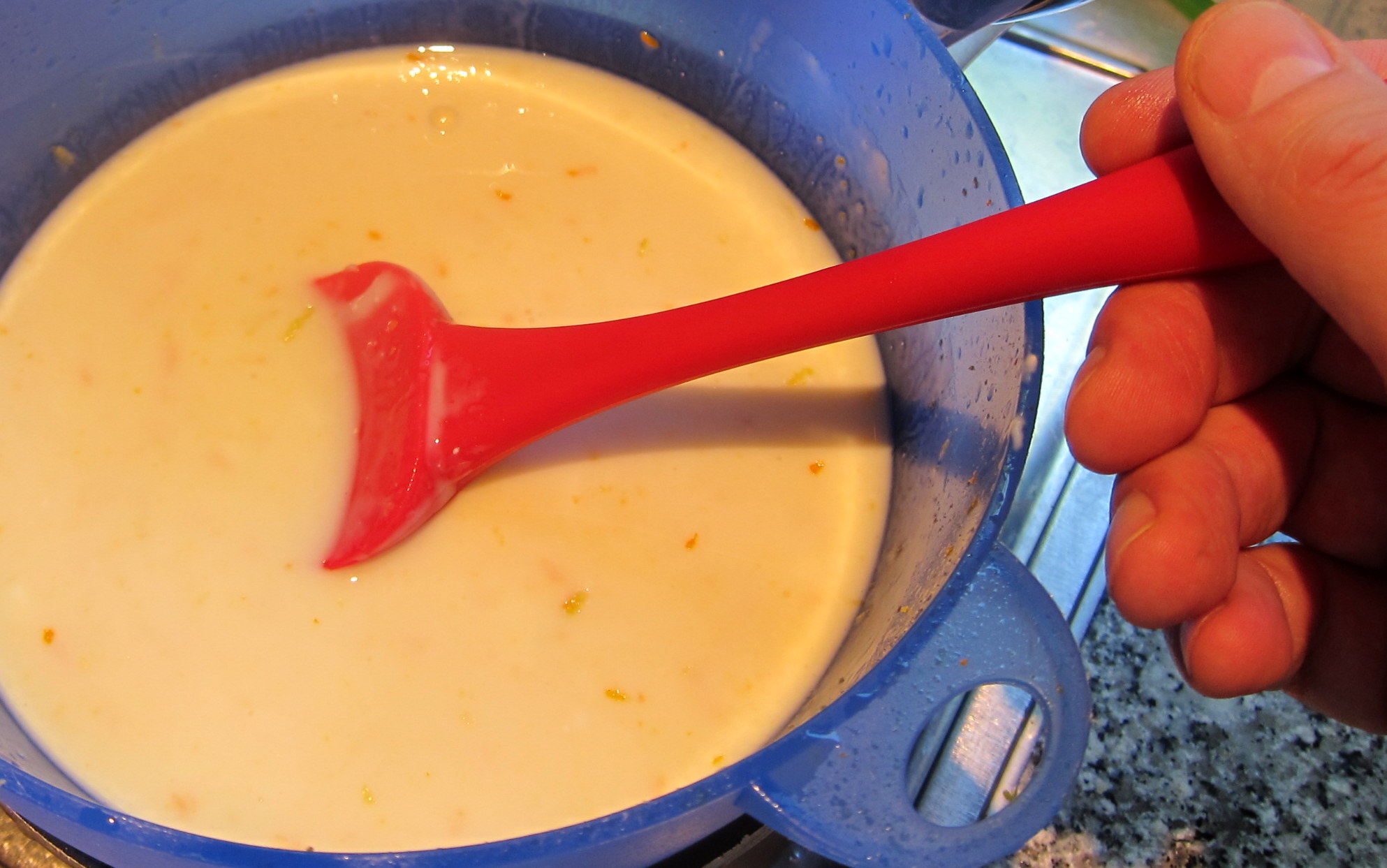
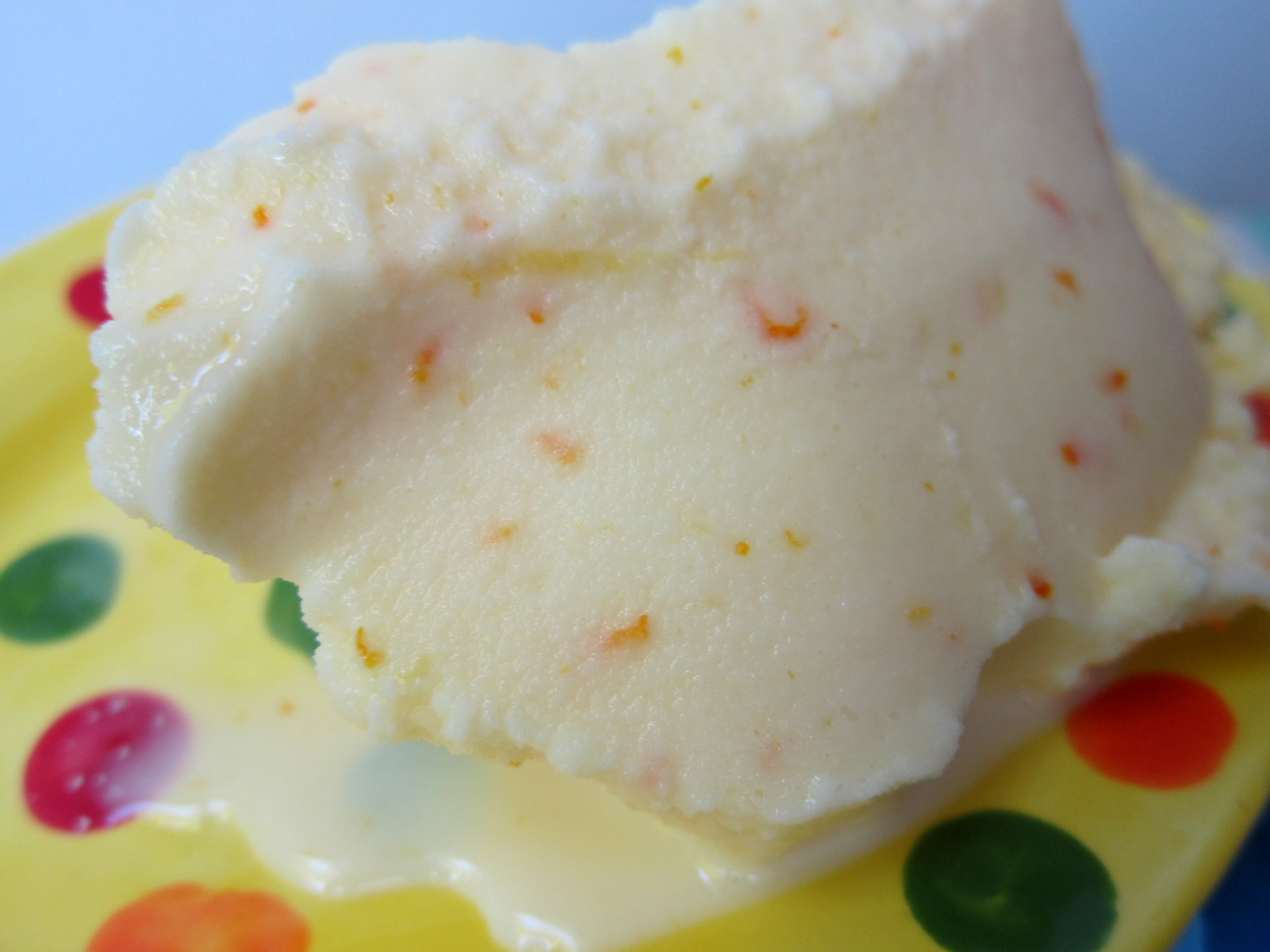


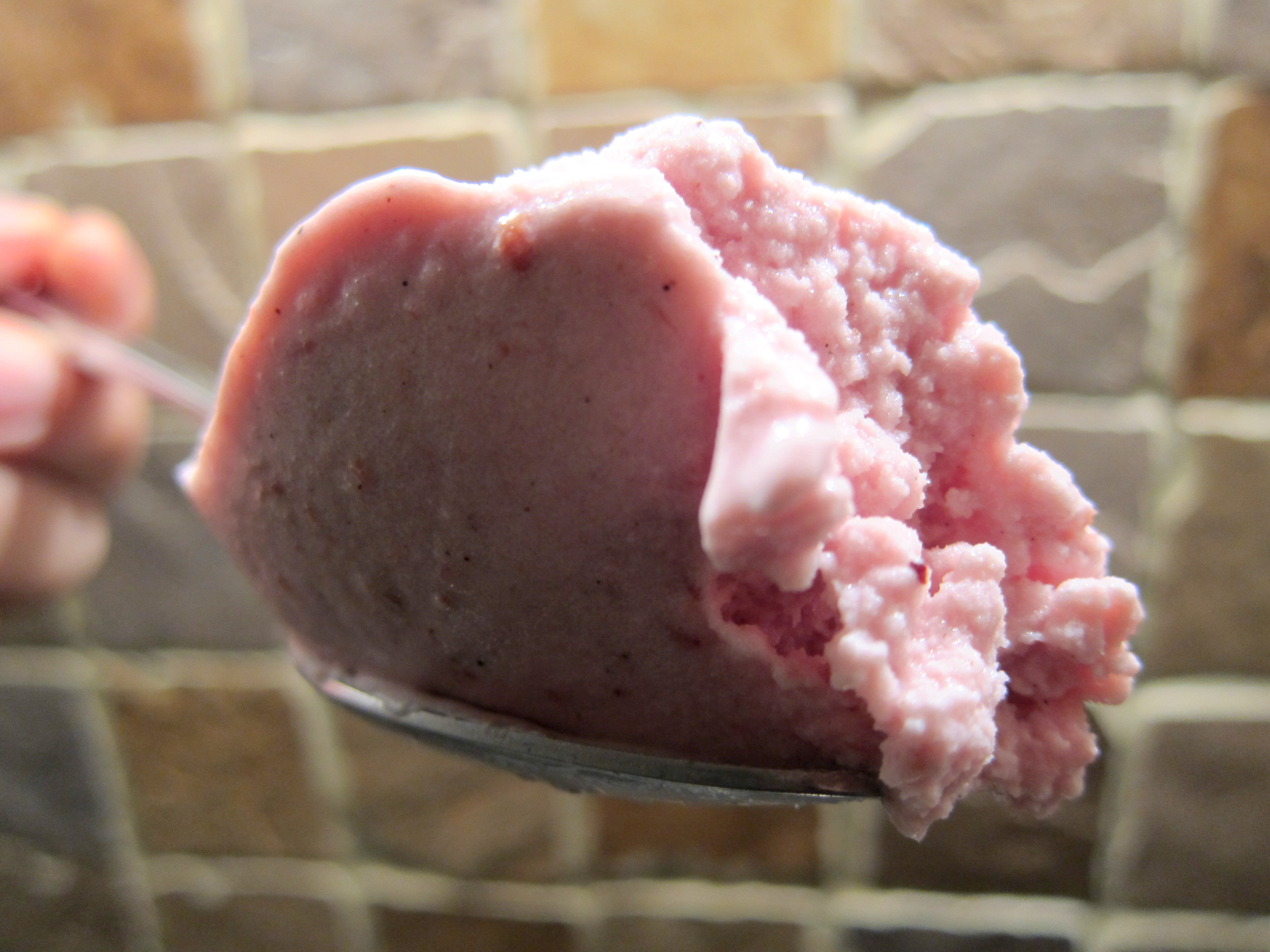


Hi u can’t get a real flavor of yoghurt from yoghurt. After 12 hours flavor disappear u need yoghurt paste about 70g per kilo to give me a real taste. Beside, the recipe needs stabilizer such as a neutro. And water too much in recipe.
Hi Franciss,
With all respect, I beg to disagree: you can get the real flavour of yoghurt from yoghurt (which, after all, also is what people have been using well before the arrival of industrial ice cream pastes). The proportion of liquid is higher than “normal”, and those who would like to may well experiment by adding a stabiliser. But mind you, the recipe still works out without it (admittedly with a consistency not quite on par with a typical cream-based ice cream 😉 )
Beautiful recipe. I don’t think 1/2 cup of sugar and 1/8 cup of liquid sweetener is above average for about 750 ml of liquid. Will definitely try this one. Thank you for the recipe!